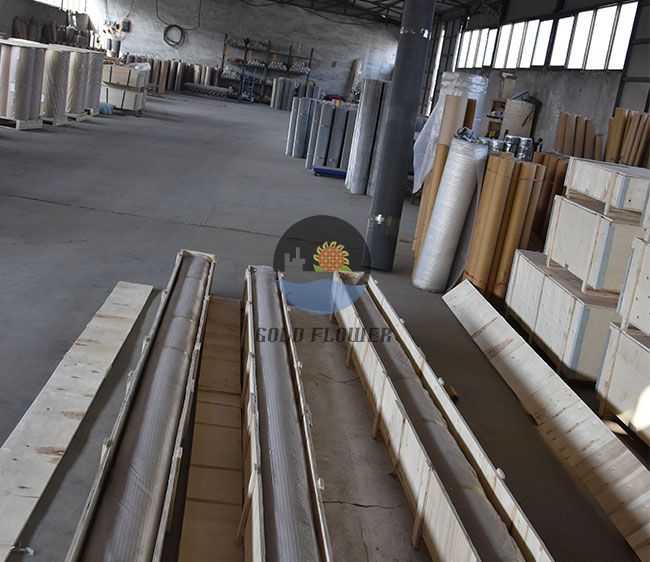Lis . 09, 2024 17:06 Back to list
Durable Galvanized Crimped Wire Mesh for Versatile Applications and Enhanced Longevity
An Overview of Galvanized Crimped Wire Mesh
Wire mesh has become an indispensable component in various industries due to its versatility, durability, and functional properties. Among the various types of wire fabric, galvanized crimped wire mesh stands out due to its strength and reliability. This article delves into its composition, manufacturing process, applications, and benefits, providing a comprehensive overview of this essential material.
What is Galvanized Crimped Wire Mesh?
Galvanized crimped wire mesh is made from steel wires that are woven together in a crimped pattern. The term 'galvanized' refers to the process of coating the steel wires with a layer of zinc. This coating serves several functions, the most significant being to prevent rust and corrosion. Crimping adds an extra dimension to the wire mesh, as it enhances its tensile strength and flexibility, making it suitable for a wider range of applications.
The crimping process involves bending the wires at regular intervals, which increases their structural integrity and allows for more efficient load distribution. This feature is particularly important in applications where the mesh will be subjected to heavy wear and tear or high loads.
Manufacturing Process
The production of galvanized crimped wire mesh involves several key steps. First, high-quality steel wire is selected and then drawn into the desired diameter. Once the wire is prepared, the crimping process begins, where the wires are bent into a zigzag pattern at specific intervals. This can be achieved using specialized machinery that ensures uniformity and precision in the crimping process.
After the wires have been crimped, they undergo galvanization. This is typically done through a hot-dip galvanizing method, where the crimped wires are submerged in molten zinc. This process ensures a thick and durable coating that protects the steel from elements that cause corrosion. Once the galvanization is complete, the mesh is woven together, and it's then cut to the required dimensions.
Applications of Galvanized Crimped Wire Mesh
Galvanized crimped wire mesh finds a wide range of applications across various sectors, including
galvanized crimped wire mesh

1. Construction and Architectural Industry It is commonly used in building facades, reinforcement in concrete structures, and as fencing materials. 2. Agriculture The mesh is effective for enclosing crops, farm animals, and as trellis support for climbing plants. 3. Mining and Quarrying Due to its strength, it is utilized for screening materials and supporting structures within mining operations.
4. Industrial Applications It serves purposes in filtration systems, security screens, and machinery guards. 5. Home Improvement DIY enthusiasts often use it for various projects including garden fencing, trellis making, and decorative fencing.
Benefits of Using Galvanized Crimped Wire Mesh
The advantages of using galvanized crimped wire mesh are plentiful
- Durability The galvanized coating provides excellent résistance against rust and corrosion, significantly extending the lifespan of the mesh.
- Strength The crimped design increases the tensile strength of the wire, making it capable of supporting heavy loads without deformation.
- Versatility Its adaptability means it can be used in numerous applications, ranging from industrial to domestic use.
- Cost-effectiveness While the initial investment may be higher compared to traditional wire mesh, the lower maintenance costs and longer lifespan make it a cost-effective choice in the long term.
Conclusion
Galvanized crimped wire mesh is an excellent choice for anyone in need of a reliable, strong, and versatile material. Its unique properties and the ability to withstand harsh conditions make it ideal for a variety of applications in numerous industries. As technology and manufacturing processes evolve, we can expect to see even more innovative applications for this indispensable material. Whether in construction, agriculture, or industrial sectors, galvanized crimped wire mesh continues to be a significant player in the world of wire products.
share
-
High-Quality Screen Stone for Modern Stone Screen Walls Elegant Facade Solutions
NewsJun.10,2025
-
High Quality Wire Filter – Cheap Stainless Steel Filter Wire Mesh Cloth & Wire Mesh Filter Solutions
NewsJun.10,2025
-
5 Micron Water Filter Cartridge - Premium Sediment Filtration, Universal Fit
NewsJun.10,2025
-
High Quality CE-Certified Gabion Boxes with OEM Options
NewsJun.10,2025
-
20x20x2 Air Filter High-Efficiency Dust Filtration for Clean Air
NewsJun.10,2025
-
Decorative Metal Mesh for Radiator Covers Custom Durable Mesh Panels
NewsJun.10,2025

